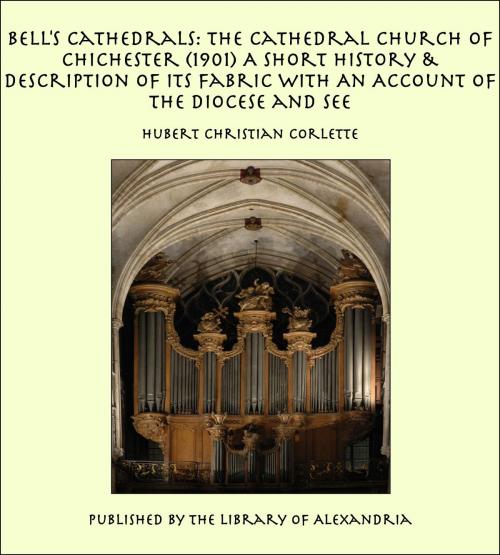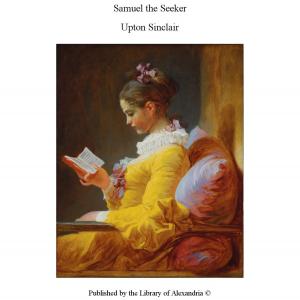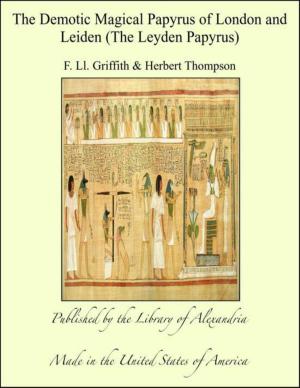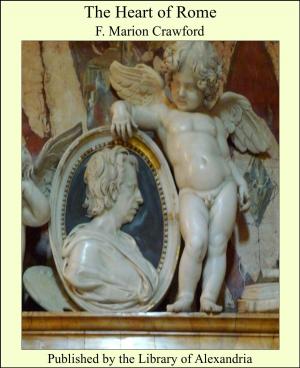Bell's Cathedrals: The Cathedral Church of Chichester (1901) A Short History & Description of Its Fabric With An Account of The Diocese and See
Nonfiction, Religion & Spirituality, New Age, History, Fiction & Literature| Author: | Hubert Christian Corlette | ISBN: | 9781465542571 |
| Publisher: | Library of Alexandria | Publication: | March 8, 2015 |
| Imprint: | Language: | English |
| Author: | Hubert Christian Corlette |
| ISBN: | 9781465542571 |
| Publisher: | Library of Alexandria |
| Publication: | March 8, 2015 |
| Imprint: | |
| Language: | English |
THE HISTORY OF THE CATHEDRAL. Any attempt to write the history of a cathedral requires that the subject shall be approached with two leading ideas in view. One of these has reference to the history of a Church; the other to the story of a building. The two aspects are clearly to be distinguished, but their mutual relation may be better appreciated when we realise how intimately they are bound together. Ecclesiastical history, or "ecclesiology," and architectural history, or "archaeology," do not exist apart; for the needs of Christian liturgy indicated what arrangement was required in those buildings that were peculiarly dedicated to the use of the Church; hence we have, in the mere building itself, to consider the condition of ecclesiastical and architectural growth displayed by its character during each stage of its development, and this development, this character, is to be discovered as well in the plan and structure of the fabric, with its decorative details, as in the record that documents and traditions have preserved. But we need to remember that one see, one building, represents a link in one long continuing chain, and in doing this we naturally look back as well as forward to observe the relation of either to the past and to the present. Such an attitude as this requires that we refer to that period when the subject of this chapter was not yet part of the native soil of Sussex, and in doing this we find that so early as the eighth century the town of Chichester was even then a known centre of civil, though apparently not ecclesiastical, activity; for it is not until about the middle of the tenth century that some uncertain documentary evidence refers to "Bishop Brethelm and the brethren dwelling at Chichester."1 It may be that Brethelm was a bishop in, though not of, Chichester, who dwelt and worked among the south Saxons living in and about the city, for the history of the diocese and see will show that probably there was no episcopate established under that name until a little more than one hundred years later. Ceadwalla's foundation of the see at Selsea dated from about the end of the seventh century; but we know nothing about any cathedral church at that place during the following three hundred and fifty years. If, however, there was a bishop in charge of the missionary priests, deacons, and laymen who lived there together, there must necessarily have been a "cathedra" in the church they used. When Stigand came from Selsea to establish his see in Chichester he found the city already furnished with a minster dedicated to S. Peter. He had effected this transfer because the Council of London had decided in 1075 that all the then village sees should be removed to towns; and as there is no evidence of any attempt to provide a new cathedral until about the year 1088, the existing minster must have been appropriated for the see. It has been supposed that Stigand may have devised some scheme for building a new church, and even that he saw it carried out so far as to provide the foundations on which to execute this idea. But there appears to be no authority which warrants the assumption that he did even so much as this, for history says nothing about such an early beginning of the new operations, tradition asserts no more, and speculation suggests probabilities merely. We are obliged, therefore, to be satisfied with the fact that the work begun about 1088 was consecrated by Bishop Ralph de Luffa, in 1108, and it is possible even now to see the stone which commemorates that ceremony embedded in the walling of the present church. Unfortunately no more than about six years had passed since this, the first, dedication, when a fire occurred which burnt part of the fabric. Ralph was still living, and began at once to repair the damage that had been done; and the king (Henry I.) gave him much help by encouraging his endeavour. What, then, had been accomplished during the twenty years between 1088 and 1108
THE HISTORY OF THE CATHEDRAL. Any attempt to write the history of a cathedral requires that the subject shall be approached with two leading ideas in view. One of these has reference to the history of a Church; the other to the story of a building. The two aspects are clearly to be distinguished, but their mutual relation may be better appreciated when we realise how intimately they are bound together. Ecclesiastical history, or "ecclesiology," and architectural history, or "archaeology," do not exist apart; for the needs of Christian liturgy indicated what arrangement was required in those buildings that were peculiarly dedicated to the use of the Church; hence we have, in the mere building itself, to consider the condition of ecclesiastical and architectural growth displayed by its character during each stage of its development, and this development, this character, is to be discovered as well in the plan and structure of the fabric, with its decorative details, as in the record that documents and traditions have preserved. But we need to remember that one see, one building, represents a link in one long continuing chain, and in doing this we naturally look back as well as forward to observe the relation of either to the past and to the present. Such an attitude as this requires that we refer to that period when the subject of this chapter was not yet part of the native soil of Sussex, and in doing this we find that so early as the eighth century the town of Chichester was even then a known centre of civil, though apparently not ecclesiastical, activity; for it is not until about the middle of the tenth century that some uncertain documentary evidence refers to "Bishop Brethelm and the brethren dwelling at Chichester."1 It may be that Brethelm was a bishop in, though not of, Chichester, who dwelt and worked among the south Saxons living in and about the city, for the history of the diocese and see will show that probably there was no episcopate established under that name until a little more than one hundred years later. Ceadwalla's foundation of the see at Selsea dated from about the end of the seventh century; but we know nothing about any cathedral church at that place during the following three hundred and fifty years. If, however, there was a bishop in charge of the missionary priests, deacons, and laymen who lived there together, there must necessarily have been a "cathedra" in the church they used. When Stigand came from Selsea to establish his see in Chichester he found the city already furnished with a minster dedicated to S. Peter. He had effected this transfer because the Council of London had decided in 1075 that all the then village sees should be removed to towns; and as there is no evidence of any attempt to provide a new cathedral until about the year 1088, the existing minster must have been appropriated for the see. It has been supposed that Stigand may have devised some scheme for building a new church, and even that he saw it carried out so far as to provide the foundations on which to execute this idea. But there appears to be no authority which warrants the assumption that he did even so much as this, for history says nothing about such an early beginning of the new operations, tradition asserts no more, and speculation suggests probabilities merely. We are obliged, therefore, to be satisfied with the fact that the work begun about 1088 was consecrated by Bishop Ralph de Luffa, in 1108, and it is possible even now to see the stone which commemorates that ceremony embedded in the walling of the present church. Unfortunately no more than about six years had passed since this, the first, dedication, when a fire occurred which burnt part of the fabric. Ralph was still living, and began at once to repair the damage that had been done; and the king (Henry I.) gave him much help by encouraging his endeavour. What, then, had been accomplished during the twenty years between 1088 and 1108















